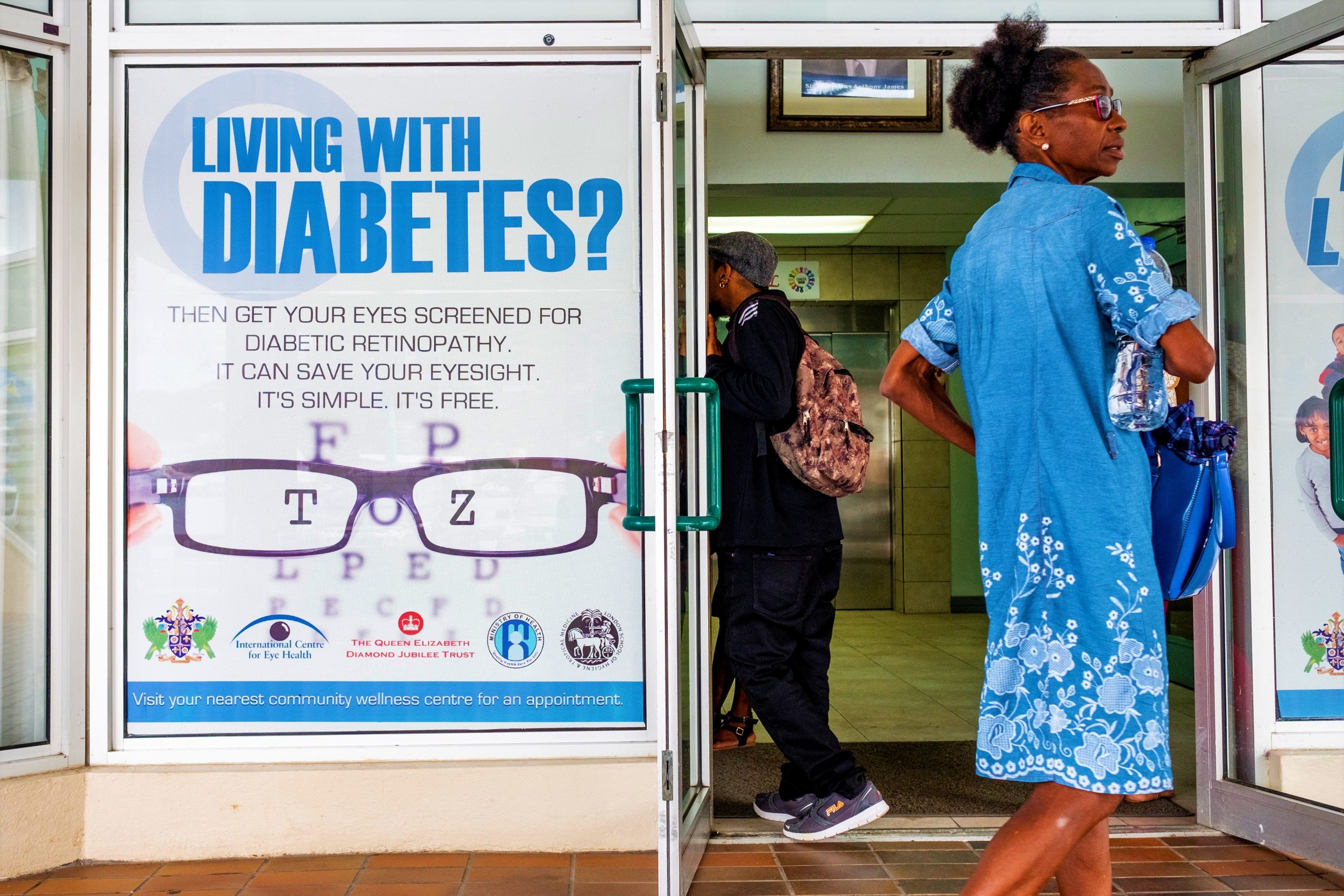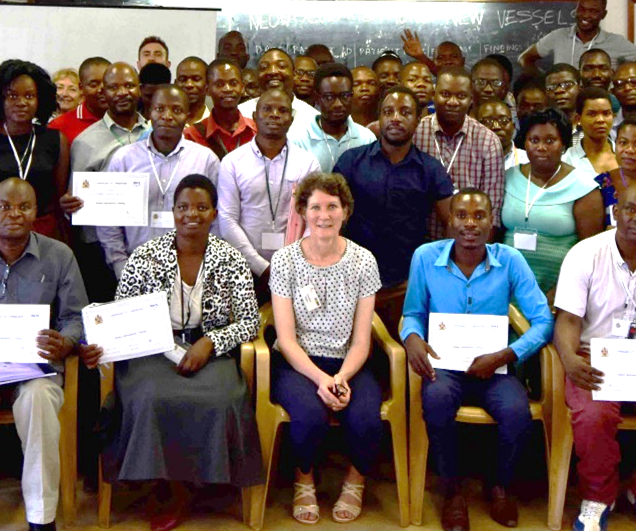The Diabetic Retinopathy Network

The challenge
Worldwide, 1 in 11 adults (425 million people) have diabetes. Three quarters live in low- and middle-income countries (LMICs). This number is dramatically increasing due to lifestyle changes, population growth and ageing.
Diabetic retinopathy (DR) is the leading cause of preventable blindness among adults of working age, occurring in almost 75% of people with diabetes within fifteen years of diagnosis. Sight loss from DR can be prevented through good diabetic control, annual screening of the eyes for signs of DR and timely treatment.
The solution
The Diabetic Retinopathy Network (DR-NET) was formed in 2014 with the aim of strengthening capacity in LMICs to establish integrated DR screening programmes to identify and treat those with sight-threatening disease. There are now 62 DR screening partnerships in the network representing 24 countries in Africa, the Caribbean and the Pacific.
The DR-NET focus areas are:
- Establishing national frameworks and guidelines for DR services
- Development of integrated DR screening and treatment services
- Acquiring and maintaining essential technology and infrastructure for DR
- Clinical skills training and knowledge exchange to develop multidisciplinary teamwork
Achievements
DR-NET set a target at the start of treating an extra 3,750 people. In fact, it achieved an extra 8,063 people treated over five years, saving an estimated extra 80,630 years of sight.
This was achieved through 92 team training exchange visits between LINKS partner centres to build capacity for screening services. A retinal laser course was developed and rolled out in eight countries training 93 eye care professionals to deliver laser treatment.
National guidelines for DR were drawn up in Kenya, Tanzania, Uganda, Zambia and Botswana, through close collaboration with the Ministries of Health of each country, thus ensuring that DR screening and treatment is included in national policies and plans, providing sustainability.
For guidance on developing national framework, good practice guidelines and planning of services please download the DR-NET toolkit from our resources page.
For more information on current diabetic retinopathy projects at ICEH click here.

Case Study
Read how the DR-NET improved training in diabetic retinopathy screening and referral for community health workers in Malawi
